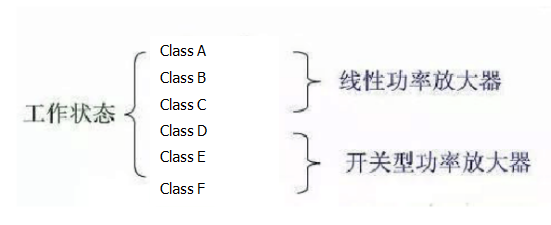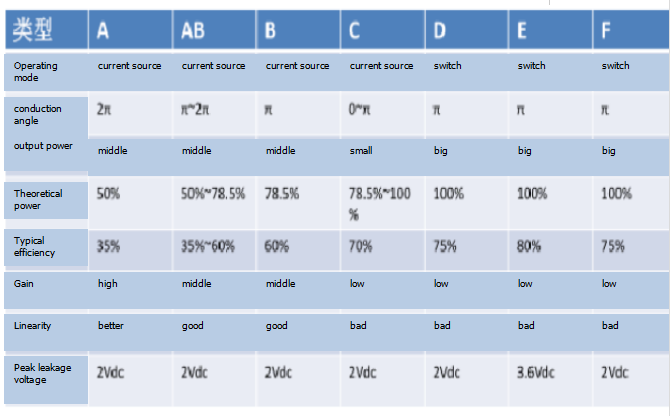Do you know the classifications of power amplifiers?
Classification of power amplifiers
Class A working state: The collector current of the transistor is always flowing throughout the working cycle, and the efficiency of the amplifier is the lowest, resulting in a relatively small nonlinear distortion. Generally used in applications where sensitivity is sensitive, such as HI-FI audio.
Class B working state: half cycle work and half cycle cutoff. Two complementary transistors are push-pull, which is more efficient than Class A power amplifiers, but there is a problem of crossover distortion, which is generally used in power amplifiers.
Class AB working state: It is the working state between Class A and Class B, that is, the transistor duty cycle is more than half. The characteristics of this power amplifier are between Class A and Class B.
Class C operating state: In this state, the transistor works for less than half a cycle, and Class C power amplifiers are generally used for high frequency resonant power amplifiers.
Class D working state: The sound signal is modulated into a PWM form, the transistor operates in a switching state, and the output end recovers the signal waveform through the LC filter. High efficiency, low frequency characteristics, used for miniaturized battery power and high efficiency.
The power amplifiers are classified as follows depending on the operating status:

Conventional linear power amplifiers have a high operating frequency, but the relative frequency band is narrow. RF power amplifiers generally use a frequency selective network as the load loop. The RF power amplifier can be divided into three working states: A, B, and C according to the different conduction angles of the current. The Class A amplifier current has a conduction angle of 360° and is suitable for small signal low power amplification. The conduction angle of the Class B amplifier current is equal to 180°, and the conduction angle of the Class C amplifier current is less than 180°. Both Class B and Class C are suitable for high power operation. The output power and efficiency of Class C operating states are the highest among the three operating states. RF power amplifiers mostly work in Class C, but the current waveform distortion of Class C amplifiers is too large and can only be used for tuning power amplification using a tuned loop. Since the tuning loop has filtering capability, the loop current and voltage are still close to a sinusoidal waveform with little distortion.
Switching Mode PA (SMPA) enables the electronics to operate in a switching state. Class D amplifiers and Class E amplifiers are common. Class D amplifiers are more efficient than Class C amplifiers. SMPA drives the active transistor into the switching mode. The operating state of the transistor is either on or off, and the voltage and current time domain waveforms do not overlap, so the DC power consumption is zero, and the ideal efficiency can reach 100. %.
Conventional linear power amplifiers have high gain and linearity but low efficiency, while switching power amplifiers have high efficiency and high output power, but have poor linearity. See the table below for details:
If you want to know more, our website has product specifications for the power amplifiers, you can go to ALLICDATA ELECTRONICS LIMITED to get more information


